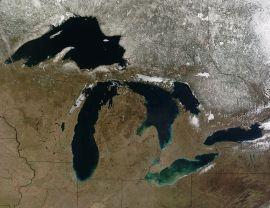GR: Invasive species are weakening and eliminating ecosystems around the world. In many instances, people introduced the invasives to increase food production for domestic livestock. In other instances, people introduce the invasives to control other invasives. The search for magic bullets such as pesticides, diseases from the original homeland of an invasive, and introduction of more competitive aliens from the homeland continues, but without much success. Many times, the only effective means to eliminate an invasive species is to apply manual labor: catching, pulling, or mowing.

“The scientists concluded that stocking could help sustain a population of Chinook salmon, but that the lake’s ecosystem is now more conducive to stocking lake trout and steelhead salmon. These two species can switch from eating alewife, which are in decline, to bottom-dwelling round goby, another newly established invasive prey fish that feeds on quagga mussels.
“Findings from our study can help managers determine the most viable ways to enhance valuable recreational fisheries in Lake Michigan, especially when the open waters of the lake are declining in productivity,” said Yu-Chun Kao, an MSU post-doctoral scientist and the lead author of the report.” –Summit County Citizens Voice (Continue: Invasive species shift Great Lakes ecosystems – Summit County Citizens Voice).

